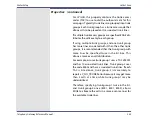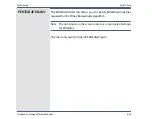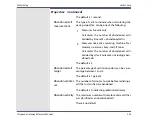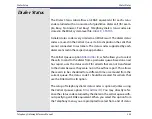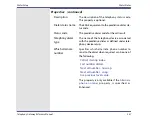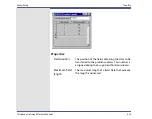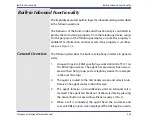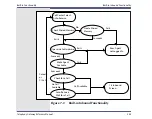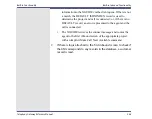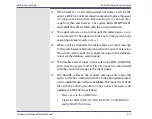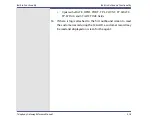
Built-in Functionality
Built-in Inbound Functionality
Telephony Gateway Reference Manual
263
display customer information in this project screen. The screen
displayed is selected using either the DNIS or the VDN of the
call.
5.
When the call is complete, the agent routes to $END, is taken to
the Call Center screen where the call is automatically discon-
nected, pauses for four seconds, then is routed back to Auto-
Receive to receive another call.
Note: When the agent receives the next call, the guide screen they are
routed to is dependent on whether the call received is inbound or
outbound, not whether they are currently on Auto-Dial or Auto-
Receive.
Inbound Call
Technical
Description
To help you understand how the generic set of telephony servers
and message queues work together, an inbound call is traced
through the appropriate servers, message queues, and shared mem-
ory. For the purposes of this example, assume there is no VRU and
host-based routing is not used. The steps that occur implicitly with
the built-in functionality are also depicted in
.
Summary of Contents for EDGE 7.11
Page 1: ...EDGE 7 11 Telephony Gateway Reference Manual ...
Page 8: ...How to Use This Manual Telephony Gateway Reference Manual 8 ...
Page 210: ...Dialer Setup Callset Area Telephony Gateway Reference Manual 210 ...
Page 221: ...Dialer Setup Callset Area Telephony Gateway Reference Manual 221 ...
Page 237: ...Dialer Setup Callset Area Telephony Gateway Reference Manual 237 white text ...
Page 368: ...Open Campaign Telephony Gateway Reference Manual 368 Call processor ID Initialize files ...
Page 390: ...Send User Data Telephony Gateway Reference Manual 390 ...
Page 601: ...Environment Variables List of Environment Variables Telephony Gateway Reference Manual 601 ...
Page 638: ...CallPath Overview Telephony Gateway Reference Manual 638 CallPath Setup CallPath Messages ...
Page 724: ...SER SER Setup Telephony Gateway Reference Manual 724 START LENGTH 1 19 ...

